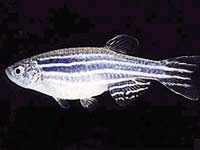Everyone knows that low oxygen levels in water can be hazardous to aquatic species. A new study published in the journal Environmental Science and Technology confirms that oxygen deficiency can also cause female fish to transform into males.
 |
In oxygen-deprived environments, striped flounder tend to be male more than female. |
Widespread use of fertilizers and industrial waste discharge into rivers is largely responsible for the decline in oxygen levels in aquatic environments. It is estimated that there are 150 major oxygen-poor areas worldwide, with the Gulf of Mexico covering an area of approximately 20,000 km².
The lack of oxygen in these regions threatens the survival of aquatic species. According to environmental toxicologist Rudolf Wu from the University of Hong Kong, this situation severely affects the sex hormones of fish.
To reach this conclusion, Wu raised striped flounder in oxygen-poor water. Shortly after their birth, these fish exhibited reproductive organs resembling ovaries. Within 10 days to a month, their genes and environment altered hormone production.
After 120 days, Wu noted that 75% of these striped flounders were male, while in environments with normal oxygen levels, only 60% were male. To explain this phenomenon, the researcher focused on the enzymes responsible for synthesizing sex hormones. He observed that young fish living in oxygen-poor environments had fewer of these enzymes, leading to increased testosterone levels and a higher ratio of males.
Wu wonders if oxygen deficiency could have similar effects on humans. Previous studies have shown that people living at high altitudes or suffering from sleep apnea have slightly different hormone levels compared to others. However, it is still far from conclusive that low oxygen levels in the air could increase the number of baby boys born on Earth!




















































